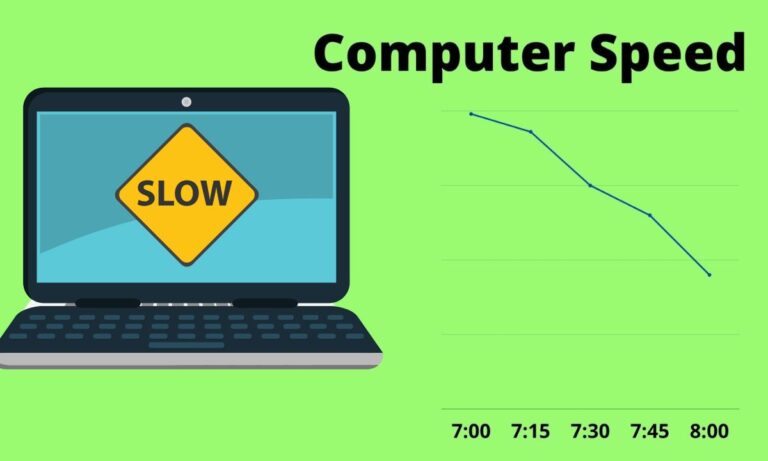How To Check If A GPU Is Working Properly?
In short: To check if your GPU is working properly, you should monitor for warning signs like system crashes, graphical glitches, or poor performance during graphically intensive tasks. Use built-in…
In short: To check if your GPU is working properly, you should monitor for warning signs like system crashes, graphical glitches, or poor performance during graphically intensive tasks. Use built-in diagnostic tools like the DirectX Diagnostic Tool (dxdiag) in Windows for basic information, or third-party software like GPU-Z or MSI Afterburner for more comprehensive data, including GPU load, temperature, memory usage, and fan speed.
Also, ensure your GPU drivers are up-to-date by checking your GPU manufacturer’s website. Lastly, keep an eye on your GPU’s temperature to prevent overheating, which can cause serious damage. If problems persist, consult with a professional or the device’s manufacturer.
A Graphics Processing Unit (GPU) is a critical component of any computing device. It’s the powerhouse behind the high-definition graphics in your games and the seamless execution of complex tasks in your software applications. But what happens if it starts malfunctioning? This article will guide you on how to check if a GPU is working properly.
Understanding the Importance of the GPU
Before we dive into the specifics of checking your GPU’s health, it’s essential to understand its role. The GPU is responsible for rendering images, animations, and videos to your computer’s screen. It’s especially crucial for those into heavy gaming, video editing, or 3D modeling. Any issues with your GPU can cause problems ranging from choppy graphics to software crashes. Therefore, regular monitoring of its performance is advisable.
Spotting the Warning Signs
The first step in checking if your GPU is working correctly is to look out for any warning signs. If you experience system crashes, graphical glitches, or poor performance while running graphically intensive tasks, your GPU may be at fault. However, these symptoms can also be due to other hardware or software issues. Therefore, it’s necessary to perform specific checks to ascertain that the GPU is the problem.
Using Built-In Diagnostic Tools
Several operating systems provide built-in tools to check the overall health of your hardware, including the GPU. Windows users can use the DirectX Diagnostic Tool (dxdiag) to check basic information about their GPU, such as the device name and the driver version. This information can be useful for troubleshooting.
To access dxdiag, type “dxdiag” into your Windows search bar and select the “dxdiag” command. The ‘Display’ tab will show information related to your GPU. However, for a more comprehensive diagnosis, third-party software may be required.
Third-Party Software for Comprehensive GPU Check
Several reliable third-party software applications can provide in-depth diagnostics for your GPU. Tools like GPU-Z or MSI Afterburner are highly recommended for a more detailed look at your GPU’s health.
- GPU-Z: This is a lightweight software that provides real-time monitoring for GPU’s core specifics. It shows details like the GPU load, temperature, memory usage, and fan speed, among others.
- MSI Afterburner: This tool, while initially designed for overclocking, provides real-time hardware monitoring. It’s compatible with most graphics cards and provides information on usage, temperature, and clock speed.
Running these diagnostic tests can give you a clear understanding of whether your GPU is functioning as expected.
Checking GPU Drivers
One common source of GPU issues is outdated or corrupted drivers. Ensuring your GPU drivers are up-to-date is a crucial part of maintaining its health. Visit your GPU manufacturer’s website – NVIDIA, AMD, or Intel depending on your device – to check for driver updates. Download and install any updates you find to keep your GPU performing optimally.
Checking for Overheating
Overheating can cause serious damage to your GPU and affect its performance. Monitor the temperature of your GPU during heavy tasks or gaming sessions using GPU-Z or MSI Afterburner. If you notice unusually high temperatures, there could be an issue with your cooling system.
FAQs
How do I know if my GPU is failing?
Symptoms of a failing GPU may include frequent system crashes, graphical glitches, unusual noise from the cooling fan, or deteriorating performance in graphic-intensive tasks.
How can I test my GPU performance?
You can use benchmarking tools like Unigine Heaven or 3DMark to test your GPU performance. These tools push your GPU to its limit and provide a score based on its performance.
What temperature should my GPU be at?
Ideal GPU temperature can vary depending on the model, but generally, it should be between 65 to 85 degrees Celsius under heavy load. Consistently higher temperatures may indicate a cooling problem.
Can outdated drivers cause GPU issues?
Yes, outdated or corrupt drivers can cause various GPU issues, including performance drops and system crashes. Regularly updating your drivers can help keep your GPU running smoothly.
How often should I check my GPU health?
If you regularly perform graphic-intensive tasks like gaming or 3D modeling, you should monitor your GPU health frequently. For regular use, checking once every few months should be sufficient.
Remember, a healthy GPU is essential for a smooth computing experience, particularly for gaming and other graphic-intensive tasks. Regular checks and updates can help ensure your GPU remains in good shape. If you continue experiencing problems despite the above checks, consider consulting a professional or the device’s manufacturer.


